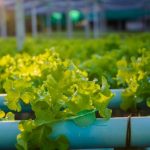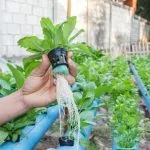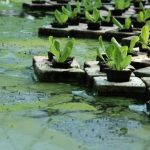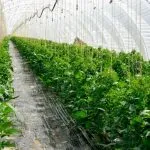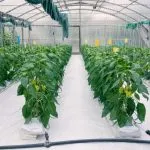Hydroponics is a fascinating method of growing plants without soil, relying instead on nutrient-rich water to nourish the roots. You might be wondering – does hydroponics need sunlight or can hydroponic plants thrive solely on artificial lighting?
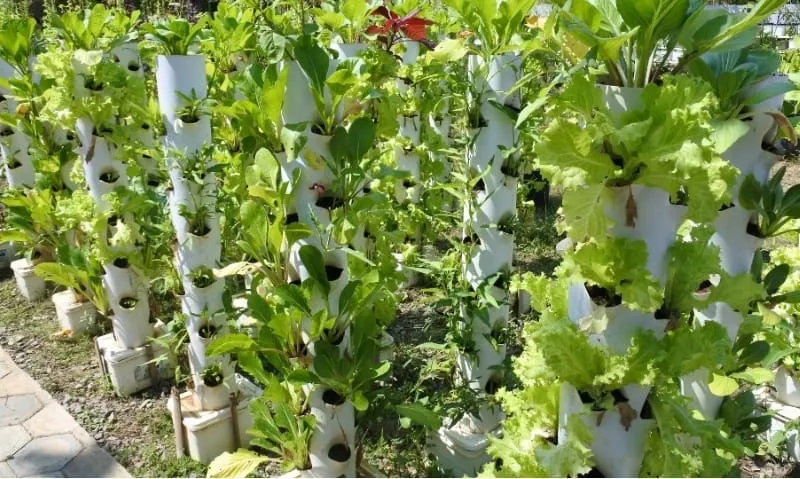
The truth is, hydroponic plants don’t necessarily need sunlight to grow, but they do require a sufficient and suitable light source. Thanks to advances in technology, specially designed grow lights can now provide the right spectrum of light that plants need to thrive in hydroponic systems. Whether you have access to ample natural light or need to rely on artificial lighting, your hydroponic plants can still flourish with the proper care.
Understanding Hydroponics and Sunlight
Role of Sunlight in Plant Growth
Sunlight plays a crucial role in plant growth, as it provides energy through photosynthesis. This process allows plants to convert sunlight, carbon dioxide, and water into sugars, which they use for growth. For hydroponic plants, light is still essential, but it doesn’t necessarily have to come from the sun. Artificial light sources can provide the correct type of light and proper intensity needed for hydroponic plants to thrive.
So, do hydroponic plants need sunlight? The answer is no, they don’t need sunlight, as long as an appropriate artificial light source is provided. However, if you want to experiment with growing certain dwarf trees in hydroponics, then we suggest that you grow them outdoors in natural light and supplement them with artificial light.
Related: Light requirements is a topic we cover in our extensive guide – Hydroponics 101. It is also a topic that beginners in hydroponics should know about.
Hydroponics vs. Traditional Soil-Based Gardening
The major difference between hydroponics and soil-based gardening lies in the growing medium. In hydroponics, plants are grown in water with a nutrient-rich solution rather than in soil. This method of cultivation allows for greater control over factors that affect plant growth, including light.
Does hydroponics need direct sunlight? No, it doesn’t. As mentioned before, a suitable artificial light source can meet the lighting needs of hydroponic plants. Your hydroponic garden should receive around 14 to 16 hours of light followed by 10 to 12 hours of darkness every day.
How much sun does hydroponics need? If you’re using natural sunlight for your hydroponic plants, they’ll need at least eight hours of direct sun per day, just like in a traditional vegetable garden. However, given the benefits of artificial lights, like LED grow lights, many hydroponic growers prefer to provide controlled lighting conditions rather than relying only on sunlight.
Does hydroponics make plants grow faster? Yes, hydroponics can make plants grow faster compared to traditional soil-based growing methods. In hydroponics, plants are grown in a controlled environment where they receive a precise balance of water, nutrients, and oxygen. This allows the plants to grow more efficiently, without the need to expend energy on searching for nutrients or fighting off soil-borne diseases.
To recap, while sunlight is essential for plant growth, your hydroponic plants don’t necessarily need direct sunlight. By adjusting the lighting in your hydroponic system, you can ensure that your plants receive the right amount and type of light for optimal growth.
Related: Besides light, the roots of hydroponic plants also need oxygen for healthy growth. Find out how to provide dissolved oxygen in hydroponics.
Artificial Lighting for Hydroponics
Supplemental lighting is especially important if your plants are always indoors or in a grow tent. In addition to light, they can also provide heat for your grow room or grow tent in winter.
Types of Grow Lights
As you embark on your hydroponic journey, you might wonder – do you need grow lights for hydroponics? The answer is optimally yes, since artificial lighting helps with optimal growth. There are several types of grow lights to choose from:
- LED (Light Emitting Diode): LED lights are energy-efficient, have longer lifespans, and emit less heat compared to other grow lights. They’re ideal for hydroponics because they provide a broad spectrum of light, including red, blue, and white.
- Fluorescent: Compact fluorescent lights (CFLs) and T5 fluorescent tubes are cost-effective options that emit low levels of heat. They work well for the vegetative growth phase but might not be the best choice for flowering and fruiting.
- Metal Halide (MH): MH grow lights are high-intensity discharge (HID) options that emit an intense blue light spectrum, promoting leafy growth and strong root systems.
- High-Pressure Sodium (HPS): Also part of the HID category, HPS lights provide a warm orange-red light, perfect for encouraging flowering and fruit production.
Spectrum and Intensity for Optimal Growth
Plants use the full color spectrum of visible light for photosynthesis. However, the blue and red portions of the spectrum are the most critical for growth. Blue light encourages vegetative growth, while red promotes flowering and fruiting. To optimize your hydroponic system, you should strike a balance between these two wavelengths.
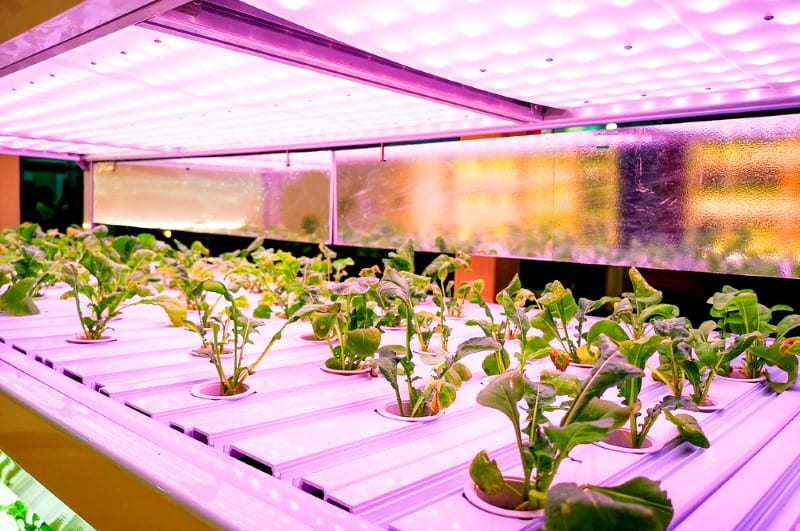
Intensity, measured in watts per square foot, is another vital factor for artificial lighting. Ensure proper intensity levels to maximize your plants’ photosynthesis and yield. Be mindful of the distance between the grow lights and the plants, as positioning them too close can cause heat stress and damage.
Choosing the Right Light for Your Hydroponic System
When deciding on the best light for your hydroponic system, consider factors such as the type of plants you’re growing, their lighting requirements, and your electricity budget. LED lights are popular choices due to their energy efficiency, adjustable spectrum, and lower temperature emission.
Remember to provide a proper light cycle, mimicking natural conditions with a combination of light and darkness. Most plants require 14 to 16 hours of light per day, followed by 10 to 12 hours of darkness. Make use of a timer to control your light cycles easily.
In conclusion, artificial lighting is indispensable in hydroponics. Understanding the types of grow lights, spectrum and intensity requirements, and choosing the right light for your system will be pivotal in ensuring the success of your hydroponic garden.
Plants and Their Hydroponics Light Requirements
Vegetables and Herbs
When it comes to vegetables and herbs in your hydroponic system, most require a good amount of light. For instance, lettuce, spinach, and turnips are long-day plants and might need up to 18 hours of sunlight per day. On the other hand, day-neutral plants like basil and cilantro can produce fruit no matter the level of light exposure. When you’re growing indoors, you can use LED grow lights to provide the necessary light and mimic seasonal lighting effects.
Some common vegetables and herbs with their lighting requirements:
- Lettuce: 14-18 hours
- Spinach: 12-14 hours
- Basil: 10-12 hours
- Cilantro: 12-14 hours
Fruits and Flowers
Fruits and flowers can also thrive in hydroponic systems with the right amount of light, depending on their type. Some annuals, for instance, can grow with less light than others. As a general rule, fruiting plants, such as tomatoes and peppers, will need more light – around 16-18 hours per day – whereas flowers might require less, depending on the specific species.
Some common fruits and flowers with their lighting requirements:
- Tomatoes: 16-18 hours
- Peppers: 14-16 hours
- Pansies: 12-14 hours
- Petunias: 10-12 hours
Trees and Ornamental Plants
Indoor trees and ornamental plants can also be grown hydroponically, but the specific light requirements will vary depending on the species. Some trees, such as dwarf lemon trees, can do well with artificial light, while others might require natural light.
Remember, the key is to provide the appropriate lighting hours and intensity for each plant while considering their individual needs. With proper care, your hydroponic system can cater to all types of plants, from fruits and vegetables to trees and ornamental plants.
Challenges and Considerations for Hydroponics
Replacing Sunlight with Artificial Light
One of the key challenges in hydroponics is finding the right balance between natural sunlight and artificial light. You might find it tricky to determine what type of light and how much light your plants need. Replacing sunlight with grow lights, like LED, Metal Halide (MH), or Compact Fluorescent Lights (CFL), can be a solution but it’s important to understand the plant’s requirements for growth and development.
Choosing the Right Light Spectrum: Natural sunlight contains a full spectrum of colors; however, your indoor plants primarily need red or blue light. Some growers opt for purple LED lights, a combination of red and blue, while others utilize specific grow lights designed to mimic seasonal lighting effects. Look for lights with the appropriate color spectrum to support vegetative growth or the flowering stage of your plants.
Evaluating Efficiency and Electricity Costs
Another consideration is energy efficiency and the associated electricity costs for your hydroponic system. Different grow lights consume varying levels of power and have various lifespans. Here are some advantages and disadvantages of common grow light types:
- LED (Light Emitting Diode): Energy-efficient, long-lasting, and produces low heat. However, they can be more expensive upfront.
- Metal Halide (MH): Good for the vegetative stage and provides a blue-white spectrum. Higher electricity costs and generates more heat.
- Compact Fluorescent (CFL): Energy-efficient and suitable for small growing spaces. Limited spectrum and lower light intensity.
- Fluorescent Tubes: Low cost and works well for vegetative growth. Lower light intensity and shorter lifespan.
It’s crucial to evaluate your budget and electricity consumption when choosing your grow light setup.
Temperature and Humidity Control
Lastly, maintaining the right temperature and humidity levels is crucial for your hydroponic system. Indoor plants may experience different hydroponics temperature and humidity conditions compared to outdoor hydroponic garden plants exposed to direct sunlight. Sunlight plays a role not only in photosynthesis but also in controlling temperature and humidity in outdoor settings.
When using grow lights, ensure you have proper ventilation and hydroponics temperature control to keep the environment optimal for your plants. Remember to monitor these variables closely and make adjustments in your system as needed to maintain a healthy and productive hydroponic garden.

